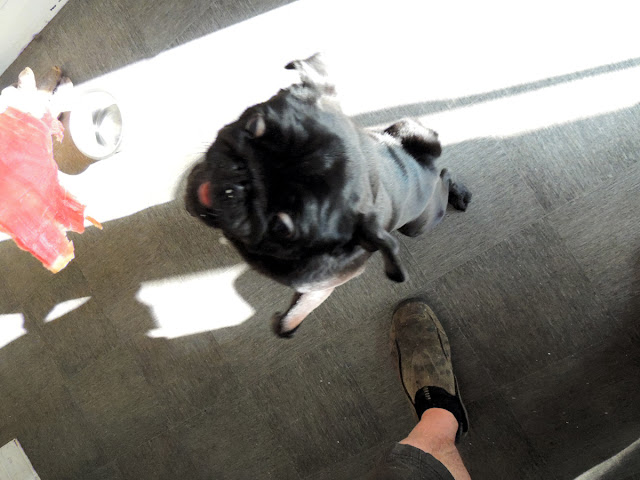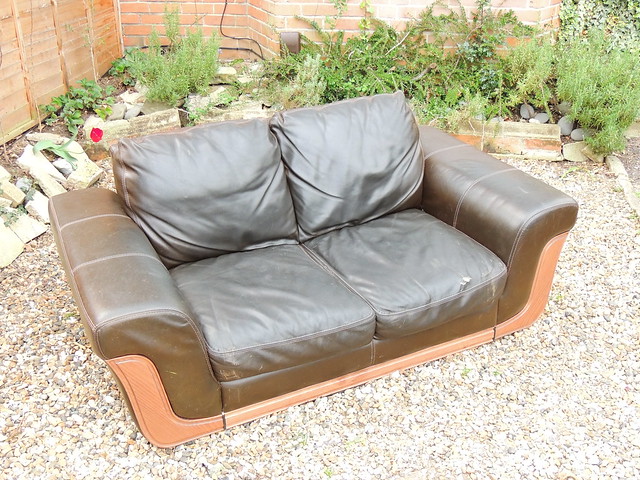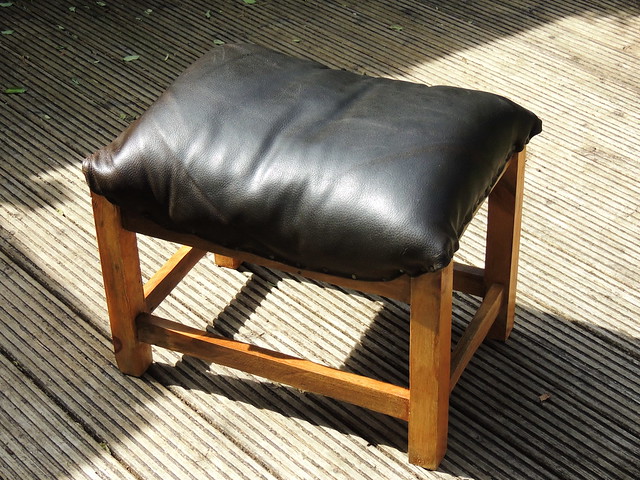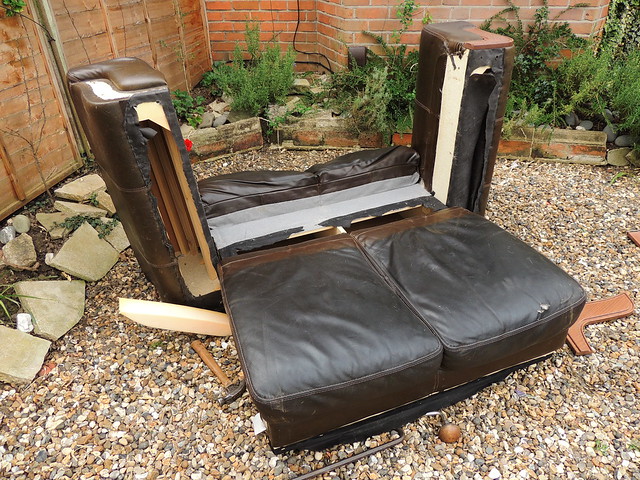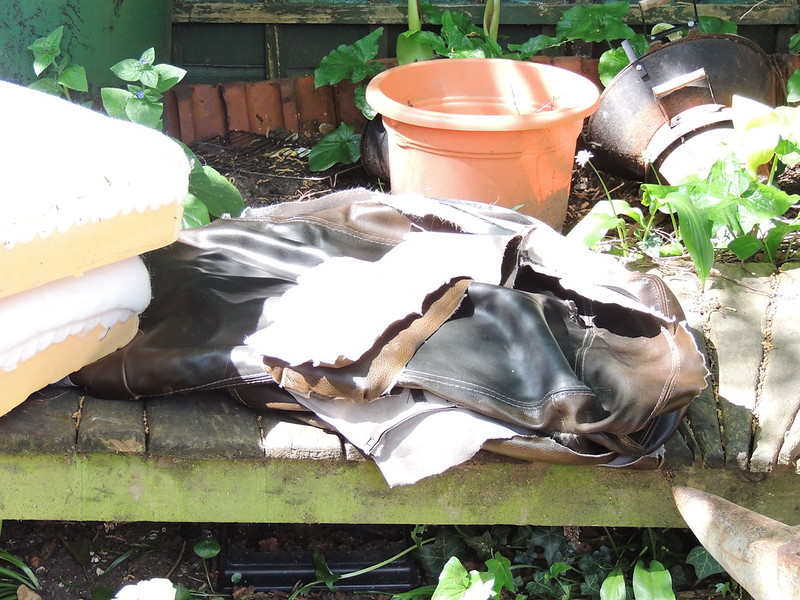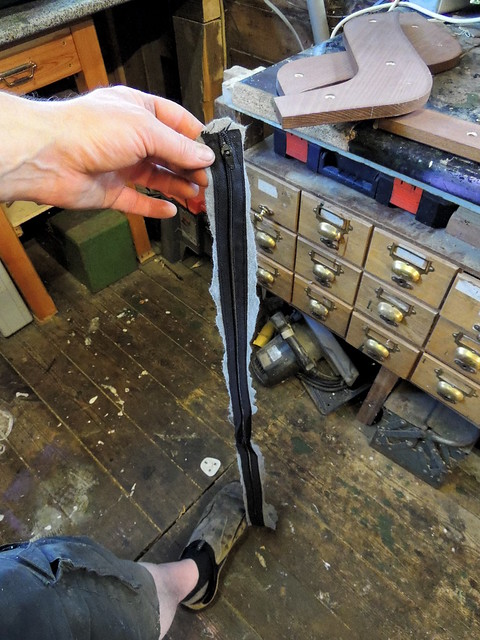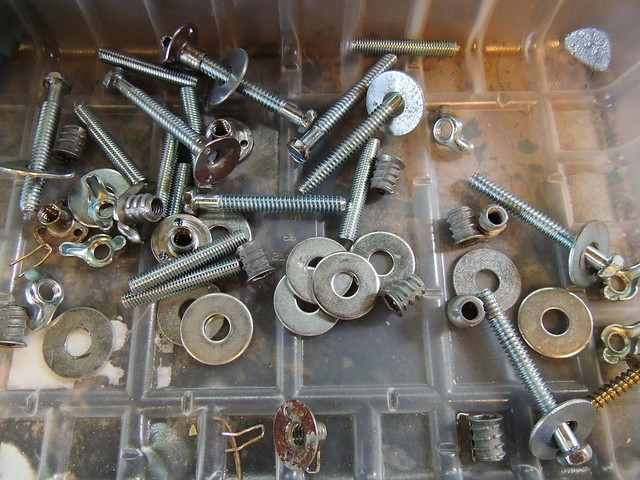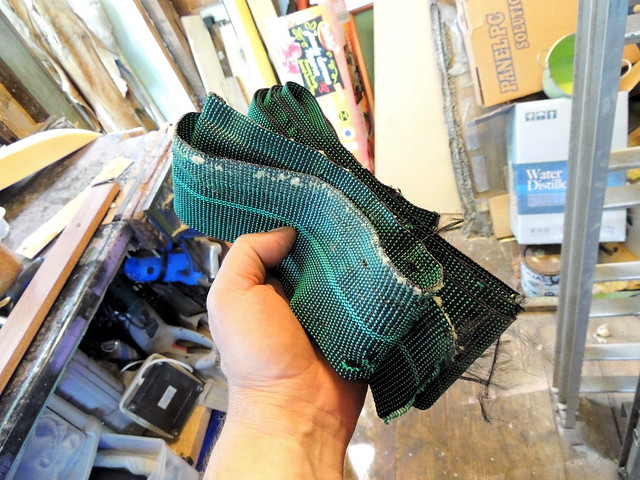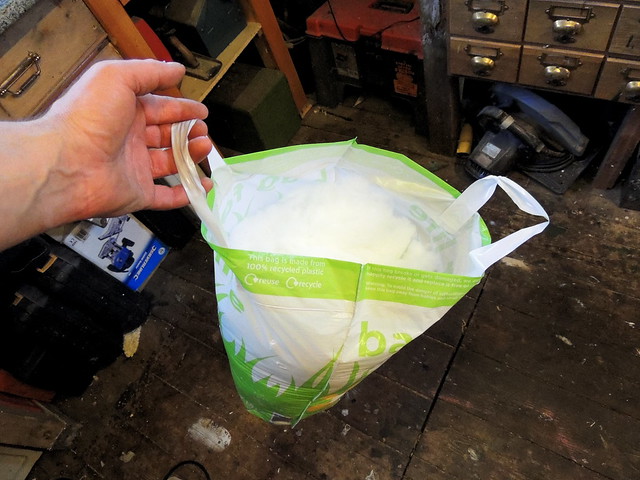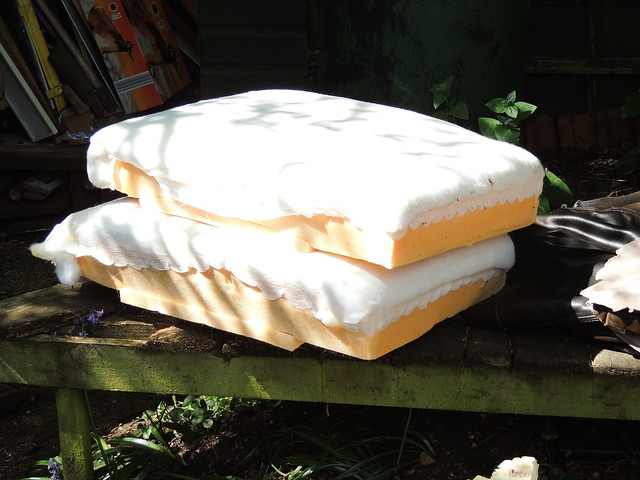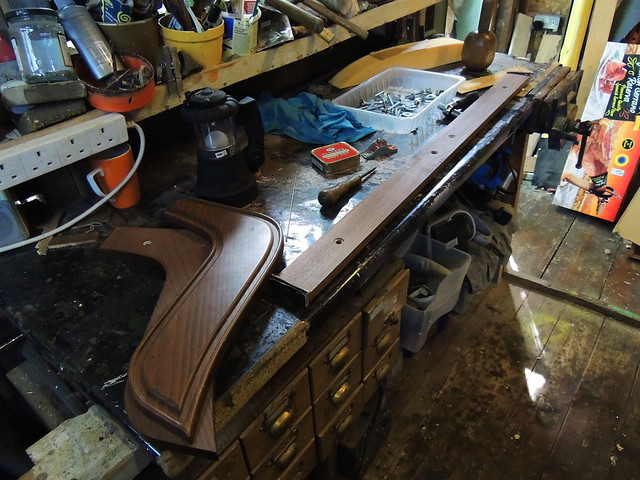Sheddage was already a delicious malty Bok-like beer. It had been brewed to a meaty 9% ABV already, so enriching it by freezing was bound to be dramatic.It had also deliberately only been lightly hopped, as it would be too bitter otherwise when turned into an Eisbier.
You can see the effect of concentrating the beer.
Sheddage (on the right) was a fairly dark amber sweet malty bock-style beer at 9% ABV. Three litres of Sheddage made just one litre of Uber Sheddage.
This probably doesn't mean it was 3 times as strong (which would have been 27%), but it was significantly sweeter, thicker and stronger. I think it was probably maybe about twice as strong, I'd guess at somewhere between 15 and 20% ABV
Fractional freezing is a way to remove water from a beer by freezing the beer, then straining off the alcoholic liquid that doesn't freeze, from the water crystals that do freeze.
Here is a 3 litre bottle of Sheddage in the freezer...
This was not completely filled to avoid it bursting.
Freezers chill down to about minus 15C to minus 20C. Perfect!
Here it is frozen solid after being left for 2 nights. Of course it was not completely solid. Only the water in the beer was frozen. The alcohol was not.
To get the juice out, the bottle was inverted and the juice left to drip out. I had bashed the bottle quite a lot with a hammer to break up the ice to help release the liquour...
Probably the best way to do this would be with a centrifuge, which is a project for another day, methinks...
You can see how the clear water ice is left behind...
Eventually I got a litre. It was obviously not just much stronger in alcohol. It was allso stronger and intense. The thickened and sweeter taste made it more like a strange malty liquour - delish!
I could have drunk it flat, but I like a bit of fizz, so I soda streamed it.
Such a useful device :)
Here it is, dark and delicious.
Foot note -
There is some debate over the legality of fractional freezing. It is generally assumed to be legal, but it is a grey area. It would definitely not be legal to sell it, but for home brew in your own home, it would be rather OTT to be pursued for this.
There are some health concerns about this but it is not likely to be more than just being stronger and concentrating any trace chemicals that can be present in the original beer in weaker concentrations.
Here is a lengthy and occassionally heated discussion on this matter...
https://www.brewuk.co.uk/forums/viewtopic.php?f=24&t=47682
For the chemical science, this experiment featured in the Journal of the Institute of Brewing from 1947 is interesting:
http://onlinelibrary.wiley.com/doi/10.1002/j.2050-0416.1947.tb01328.x/epdf
Essery, R. E., Gane, R. and Morris, T. N. (1947), THE CONCENTRATION OF BEER BY FREEZING. Jnl Institute Brewing, 53: 204–208. doi: 10.1002/j.2050-0416.1947.tb01328.x





























